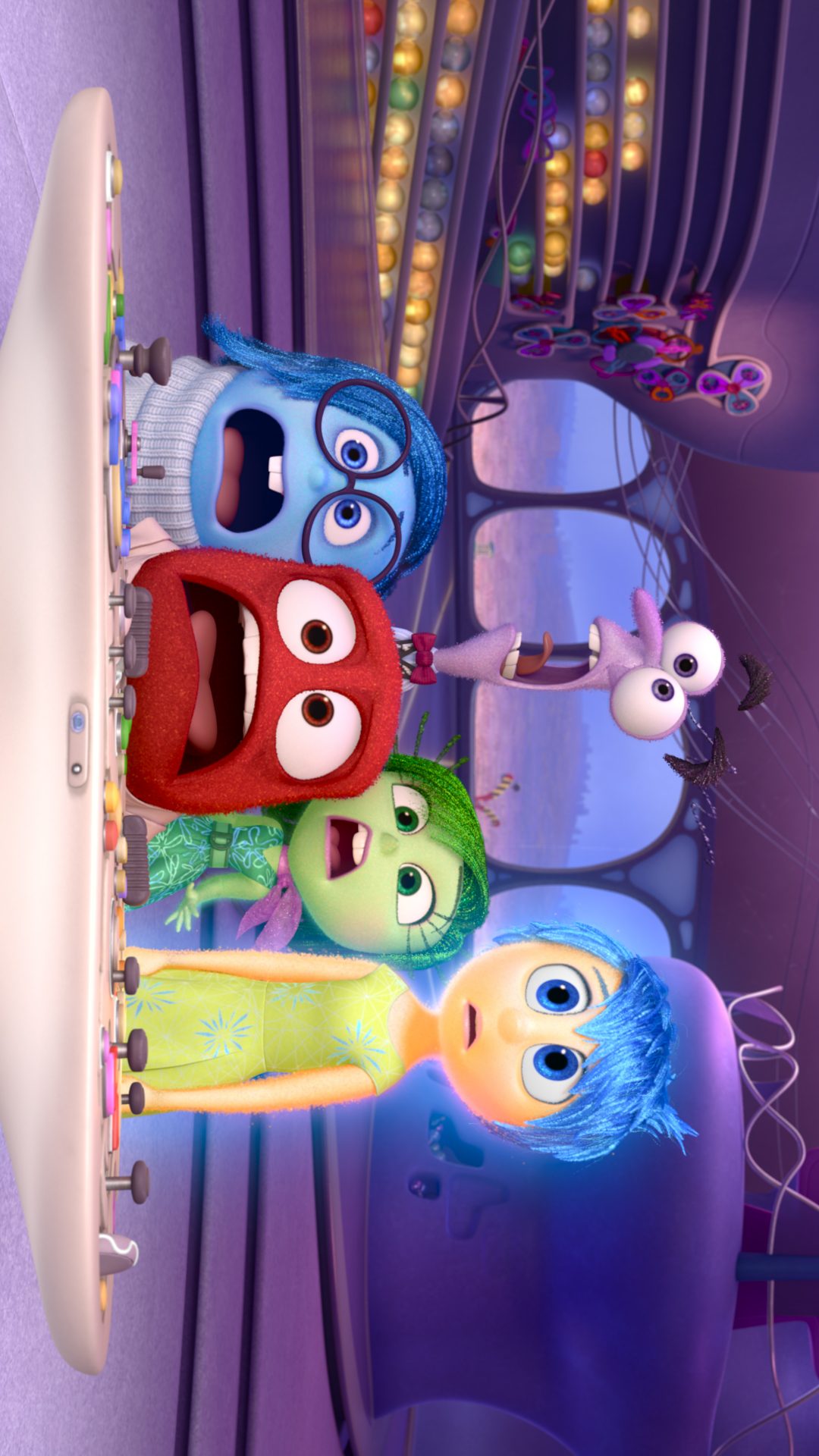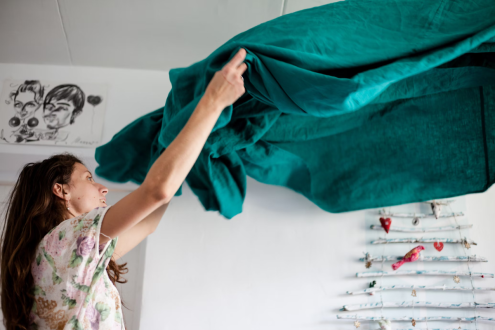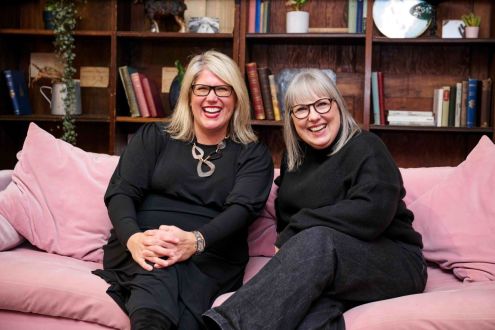Inside Out: Interview with the creators
As Disney Pixar's new release Inside Out hits the box office at number one, we speak to the geniuses behind it, director Pete Doctor and producer Jonas Rivera, on their main characters; Joy, Fear, Anger, Disgust and Sadness, and how they brought the insides of our minds to life...

The geniuses at Pixar (director Pete Docter and producer Jonas Rivera) have pulled another one out of the bag. The creators of Up and Toy Story have taken a journey into our minds in their new release, Inside Out. With voices from the hilarious Amy Poehler and Mindy Kaling, Inside Out’s main characters are our emotions. We follow the goings on inside the mind of 11-year-old Riley, with Joy, Fear, Anger, Disgust and Sadness, all calling the shots on Riley’s feelings, trying to keep her safe, happy and get her what she wants. But what is the point of sadness being there?
We caught up with Pete and Jonas in London to pick their minds about the making of and ideas behind Inside Out…
How did you come up with and devise all the different elements within the mind; personality islands, imagination land, etc?
Pete: It was a lot of working and reworking; a lot of stuff that you see on the screen is maybe the 50th attempt at it. We do a lot of writing but we also draw the whole thing, almost like a comic book. We film that, put our own dialogue to it with music and sound-effects and create kind of an approximation of what the movie would look like if we made that. Then we ask the crew, kitchen staff, everyone to watch it and react to the film; some things work and get a good reaction or laugh, and other things fail miserably, and we take the things that work and try to make it better. We do this process again and again, and that’s how I think we were able to get multiple stabs at and attempt to visualise this very abstract idea of going inside the mind.
Jonas: It was sort of the blessing and curse/challenge of the movie. It was a blessing in the sense that there were no rules; it was totally open, so we could visually define emotions and the mind and the places in the mind, but it was a challenge in that there was no point of reference. For example, for the movie Cars, we could study cars and the roads and towns, but with Inside Out, the sky was the limit. But we have an amazingly talented pool of artists who, as Pete would write, would visualise and respond to it and give us a sneak peek as to how it might look.
And you worked really closely with psychologists and emotion experts Paul Ekman and Dacher Keltner. How did they help guide your ideas?
Pete: We’d come with very specific questions like, how many emotions are there? How do you clinically define an emotion? What does it do to us? How does it affect us? Then we would apply the information they would give us in different ways. For example, early on, we thought perhaps the console that the emotions steer on should be scientifically literal, so anger increases our heart rate. So Anger steps up and he turns the heart rate knob up, he directs the blood to the arms to fight, as Fear would direct the blood to the legs to run away. So all this stuff based on the research, in the long run we decided it wasn’t that important to the story and we maybe don’t want to be that physical, because it’s not really vital to the story. But the idea of, say, memories being redirected from short term to long term came out of research, so it was less about them being involved in the storytelling, and more about being fed information by them that we could use as storytellers ourselves.
Jonas: I was struck by the simple fact that emotions have a clinical reason for being a part of us, which I hadn’t thought of. I understood the physical reasons for the need to be scared or feel disgust, which led us to the fact that they have jobs and, if they have jobs, they would be trying to do a good job, and they would all have opinions on the right way to do their job. That started to create this short-hand conversationalism to the movie, and also for me personally, created this really fun idea about emotions going to go to dream productions and personality islands, to make this an important movie. It was a deeper well than I’d thought.
So what made you want to make something that was more psychological, touching on mental health?
Pete: It just seemed very intriguing. The idea sort of unfolded in levels – at the very beginning, the attraction for me was the humour; the idea of characters that have strong opinionated caricatured actions – that’s what animation does best. So the idea of personifying joy or fear or anger, that was the first attraction. Then as we got into it, we realised that we could go to these worlds that are at once familiar, but that no-one has ever seen before – where dreams come from, why song get stuck in our head, and then the third revelation, after getting into it for a while, realising this idea could have stronger resonance with us as people and the way we communicate, but that all presented itself like an onion skin.
What are you hoping adults will interpret from the film?
Pete: Initially, the way it was presented was for the benefit of the individual, and even the fact that the emotions all have jobs and are out for the good of the one character was really cool, but ultimately the thing that had a deeper resonance for me was the idea that these emotions are connecting us. If we try to hide our sadness, then we are missing out on a chance to connect on a much deeper level with other people, and that seemed very profound.
Jonas: We spend so much time avoiding sadness. I say to my kids ‘don’t be sad’, like a command! It’s almost unfair to say it. That was intruiging and felt like the right ingredient somehow.
Pete: And Dacher Keltner was a real proponent of sadness. As we spoke about the reason for sadness inside of all of us, he explained the benefit it has for an individual: it slows you down and that has a purpose; if you have a big loss in your life, you can’t just go back to work like nothing has happened. It forces you to reassess how life is going to be different now, and it actually asks for help. Sadness triggers display signals to other individuals that want to come to your aid. You walk by someone on the sidewalk who’s crying and it’s almost instinctive to turn and pay attention because I think we are triggered by that because we want to comfort and help.
Jonas: I remember talking to Keltner too about the sports medicine analogy in terms of sadness, so for example a football player, gets hurt and can’t run. So they get a cortisone shot so they can get back in the game, but there’s a reason why their leg hurts. By ignoring it and fixing it and patching it up, we are doing more damage without knowing. It’s similar to sadness – if you don’t respond to that signal – something worse could brew and you could cause more internal damage. So sadness became a really important character for us.
Riley’s main dominant emotion was Joy – why did you choose Joy? And how did you choose the dominant emotions for her dad – anger, and her mum – a very democratic sadness?
Pete: To be honest, a lot of it grew out of comedy. A lot of folks have asked why are Dad’s emotions all male, why are Mom’s all female, while Riley’s are mixed – it was really for clarity, but we wanted to make them individual and unique so you instantly know where you are. Why was Dad driven by Anger? I think that was partly just the observation that people have different tendencies; some people get angry much quicker, some people get sad much quicker. And then too, it felt correct because sadness has a lot to do with empathy and listening and that felt correct for Mom.
Jonas: Yeah, it’s les about Mom as a sad person, but more that she’s empathetic, she hears a little more.
What are you favourite emotions and how do they relate to your own experiences with them?
Pete: Joy is ultimately my favourite but in a sense she is the richest, most complex and the hardest to write for. A lot of our early versions of joy are very off-putting and annoying, we would literally get comments from people watching the screenings like: “Great movie! Hated your main character”. So we had to go back and craft her. And the key to her was she’s a strong driver of the movie; she’s always optimistic and thinks “Yes, we can solve this!” But what we ended up doing was to out these moments of hesitation and vulnerability which really allowed us to feel that this mattered to her. So when the first island of personality crumbles, she just watched it and said, “This is bad but we can fix it”, so we decided to really milk that moment of “Oh no! This is bad. But… we can fix it.” So she’s still back up but we have a moment where we can connect with her.
And why did you choose to name her Joy over Happiness? And how did you choose the genders for the emotions?
Pete: Ekman names that emotion happiness, but we thought we were being clever by using a name that’s actually a name, and so Joy just seemed to fit better. The genders were a little bit arbitrary.
Jonas: And even in your original pitch, with Joy you just said ‘she’.
Pete: It was a little bit of trial and error. We had sadness as a male for a while. Anger always felt more masculine as did fear, but I guess, you know, in another world we could have switched that around.
How did you choose which emotions to focus on?
Pete: Ultimately it really boiled down to what was best for Joy and her story. So for example you have Pride, who thinks Riley is wonderful and have a great deal of enthusiasm for her success, and ultimately that steps on Joy’s toes in terms of writing, you now have two characters who are routing for Riley in that way. And then you have Hope who’s like: “I hope Riley has a good day at school!”, so instead of having that other character and looping that character into Joy as well.
Is the film aimed towards adults more than children?
Jonas: It’s aimed at both adults and kids. I think we start all our films just ignoring that thought; who it’s for, what age… we just want to make a film that’s for us. Which I guess is adults (but I think we’re like eight-year-olds!). We are making Disney Pixar films, but we want them to appeal to everybody. We start by asking ourselves what do we want to tell? Why do we want to tell it? Let’s see if we can’t do that, and then make sure there is humour for kids and enough for adults, too. I always think of it as a great ride at Disneyland; like the Pirates of the Caribbean. We’re big Disneylanders; every year you go back and you see something new, so we try to make the films work on repeat viewing. So I think that’s why it works so that it’s not torturous for parents.
Pete: It’s interesting because we’ve done this for long enough now that it’s not even something we think about. As we are coming up with ideas I’ll say: “Well, that’s not really right for this”. It’s instinctive.
Jonas: I’ll give you an example… there’s a joke in the movie that gets a big laugh from adults. It’s where Joy knocks over the box of facts and opinions and they spill, and Bing Bong, Riley’s imaginary friend, says “Don’t worry, it happens all the time” and puts them all back in the same box. Adults crack up at that, obviously that’s not a joke that kids would get. But my son is three, and he was sitting on my wife’s lap watching it and he laughed at the joke! I thought, is he a genius? And my wife said no, he’s laughing because they spilled! And that’s funny – we didn’t try to do that, we just thought it was a funny gag.
Inside Out is in cinemas now. Watch the trailer here:








